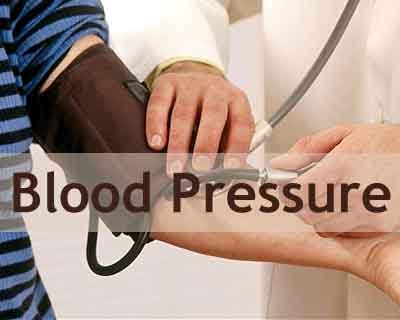- Home
- Editorial
- News
- Practice Guidelines
- Anesthesiology Guidelines
- Cancer Guidelines
- Cardiac Sciences Guidelines
- Critical Care Guidelines
- Dentistry Guidelines
- Dermatology Guidelines
- Diabetes and Endo Guidelines
- Diagnostics Guidelines
- ENT Guidelines
- Featured Practice Guidelines
- Gastroenterology Guidelines
- Geriatrics Guidelines
- Medicine Guidelines
- Nephrology Guidelines
- Neurosciences Guidelines
- Obs and Gynae Guidelines
- Ophthalmology Guidelines
- Orthopaedics Guidelines
- Paediatrics Guidelines
- Psychiatry Guidelines
- Pulmonology Guidelines
- Radiology Guidelines
- Surgery Guidelines
- Urology Guidelines
Both High systolic and High diastolic BP independently influence heart attack and stroke risk: NEJM

Contrary to common belief, high systolic and high diastolic blood pressure are strongly, independently linked to cardiovascular risk, according to new Kaiser Permanente-led research
Both systolic and diastolic blood pressure(BP) independently influenced the risk of adverse cardiovascular events, regardless of the definition of hypertension (≥140/90 mm Hg or ≥130/80 mm Hg), revealed a study which appeared in the New England Journal of Medicine (NEJM).
For long diastolic blood pressure (BP) has been regarded as a more accurate determinant cardiovascular disease (CVD) risk and adverse events associated with it. In a new study conducted by Kaiser Permanente Northern California in collaboration with Harvard Medical School and other big organizations, scientists have found that both systolic and diastolic blood pressure are independent predictors of adverse cardiovascular outcomes, regardless of the definition of hypertension (≥140/90 mm Hg or ≥130/80 mm Hg).
Hypertension or high blood pressure is one of the leading cause of bad cardiovascular health which leads to adverse outcomes such as stroke, heart attack, and death. Fifty years ago, diastolic blood pressure (BP) was considered to be more predictive of adverse cardiovascular (CV) events than systolic BP, but epidemiologic studies eventually reversed that approach. More recently, systolic BP has been deemed more important, although both systolic and diastolic BP targets are recommended in guidelines released by NEJM.
This study aimed at ascertaining the effects of both systolic and diastolic BP. In order to achieve the scientists performed a multivariable Cox survival analysis to determine the effect of the burden of systolic and diastolic hypertension on a composite outcome of myocardial infarction, ischemic stroke, or hemorrhagic stroke over a period of 8 years. The analysis controlled for demographic characteristics and coexisting conditions.
Key findings
- The burdens of systolic and diastolic hypertension each independently predicted adverse outcomes.
- In survival models, a continuous burden of systolic hypertension (≥140 mm Hg) and diastolic hypertension (≥90 mm Hg) independently predicted the composite outcome.
- Similar results were observed with the lower threshold of hypertension (≥130/80 mm Hg) and with systolic and diastolic blood pressures used as predictors without hypertension thresholds.
- A J-curve relation between diastolic blood pressure and outcomes was seen that was explained at least in part by age and other covariates and by a higher effect of systolic hypertension among persons in the lowest quartile of diastolic blood pressure.
"Although systolic blood-pressure elevation had a greater effect on outcomes, both systolic and diastolic hypertension independently influenced the risk of adverse cardiovascular events, regardless of the definition of hypertension (≥140/90 mm Hg or ≥130/80 mm Hg). (Funded by the Kaiser Permanente Northern California Community Benefit Program.)" the authors conclude.

Disclaimer: This site is primarily intended for healthcare professionals. Any content/information on this website does not replace the advice of medical and/or health professionals and should not be construed as medical/diagnostic advice/endorsement or prescription. Use of this site is subject to our terms of use, privacy policy, advertisement policy. © 2020 Minerva Medical Treatment Pvt Ltd